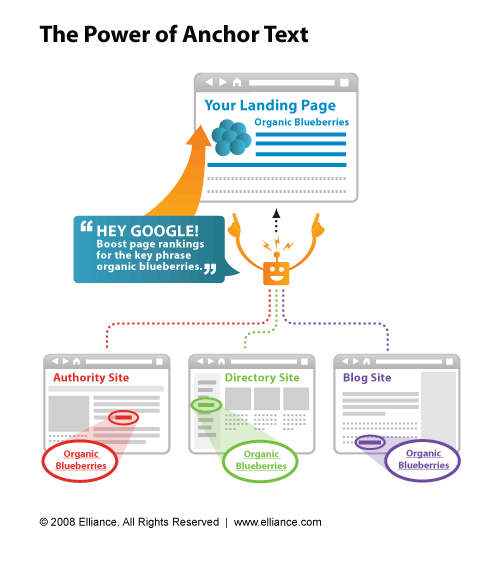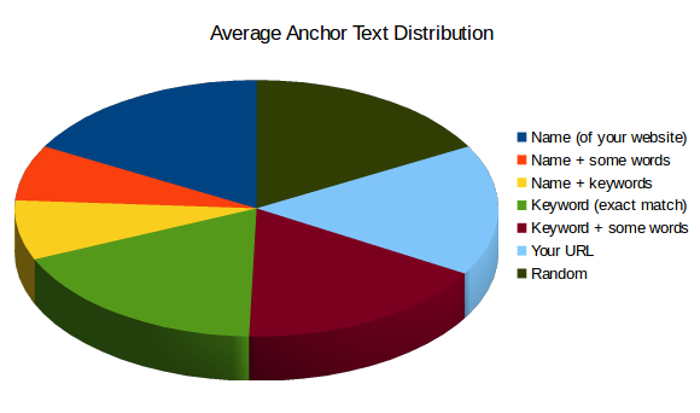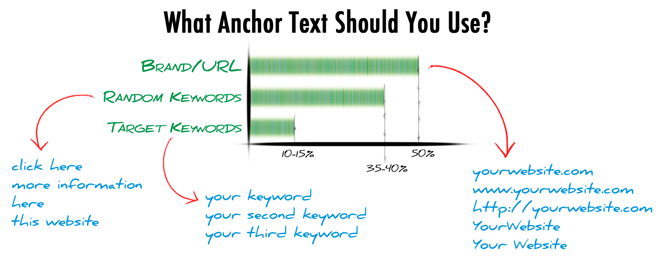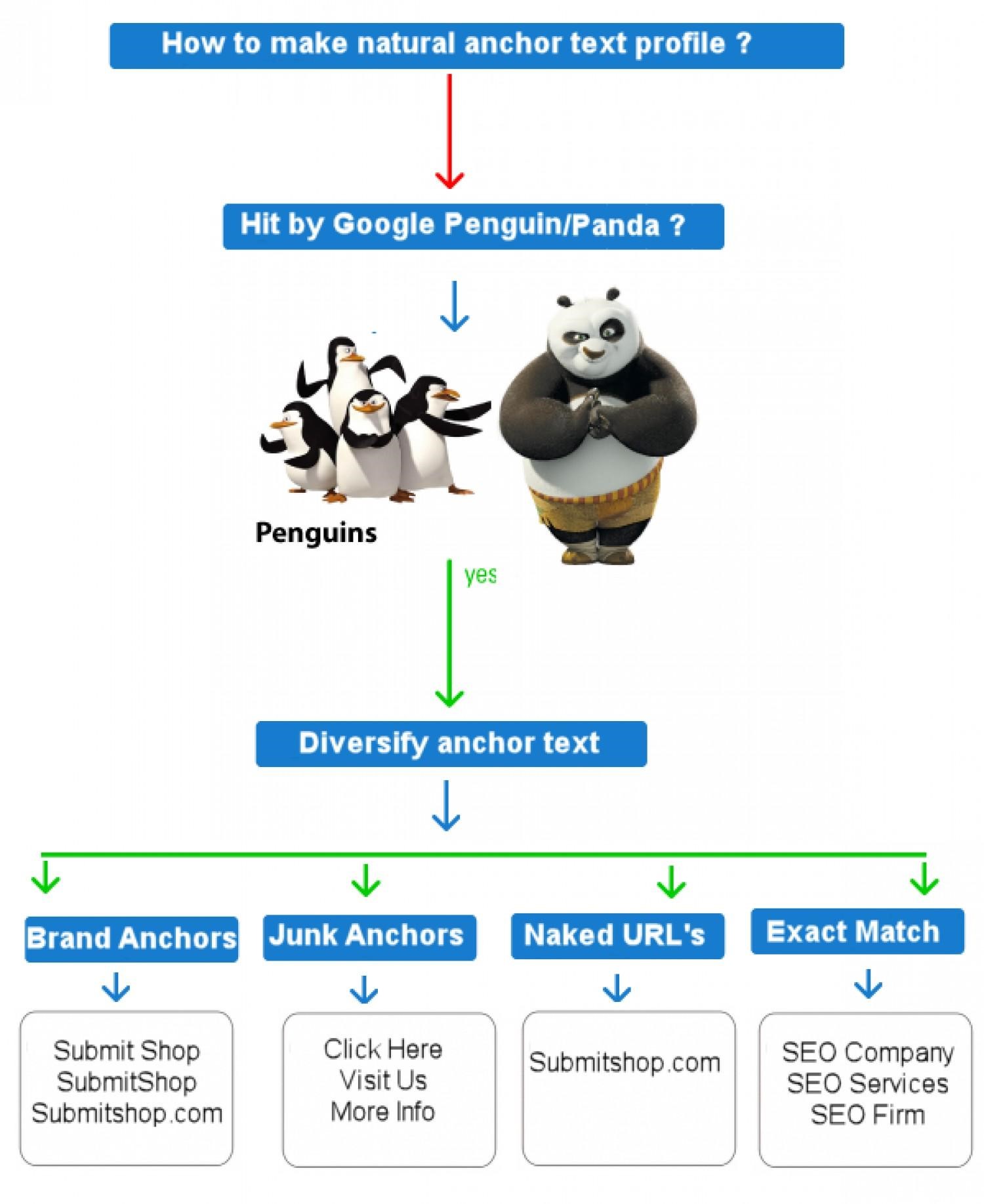How To Use Anchor Text in Guest Posts To Stay Under Radar
Backlinks are essential when it comes to ranking your blog higher on Google.
However, it’s not just backlinks that are important. The anchor text that is attached to the URL is significant.
Here is what @JohnMu from Google said,
“Most links do provide a bit of additional context through their anchor text. At least they should, right.”
So, anchor text provides a context of the article that is being linked, to the Google crawl bots.
It’s not just words; even images can be used as anchors. So, for example, an image is used for linking to a page. In this, the “image alt text” becomes important.
When Google was asked if anchor texts in URLs can be skipped, this was the response they gave:
“Anchor text (and image alt text) helps us quite a bit in understanding context, so I wouldn’t leave it out if you can avoid it.”
Anchor texts are important and should not be neglected. Here in this guide, we will cover everything there is to know about anchor texts.
However, first, let’s make sure our basics are rock solid.
What is an Anchor text?
An anchor text is a clickable text which is used to connect one web-page to another. Which means that when we click on that link, we will be directed to a different web-page.

For instance, the word “anchor” in the image is clickable. When a user clicks on it, it will get directed to the url used in the hyper mark-up.
Importance of Anchor Text:
Anchor texts will remain relevant until the time Google continues to use backlinks as a ranking factor. Anchor text provides context to crawl bots about the webpage that is being linked.
However, multiple instances of anchor text on a single webpage is flagged as spam by Google. Google’s Penguin update had penalized many such sites because of this very reason.
After 2012, backlink creation has become tough because of the strict rules that Google has set.
How does Google algorithm work?
- You build a backlink using anchor text.
- Now, Google will analyze this and rank your site.
- After that, this backlink is stored in Google’s database.
This is how Google detects the anchor text spamming:
Suppose you have a website in the “weight loss niche.”
Now, if you have written an article which is optimized for the keyword “weight loss in 2 weeks” and if all your links on the same page have the same anchor text: “weight loss in 2 weeks” then you are most likely to get penalized.
Stuffing keywords containing the anchor text and using it multiple times on the same page will definitely ring bells in the Google Algorithm.

Do you know the types of the anchor text?
Well, there are almost ten anchor text types, and we will discuss some of them in the sections to come.
Branded:
In this type, the brand name is represented as anchor text.
For example:
Apple
Samsung
For instance: Apple is one of the best mobile brands in the world.
Branded anchors are considered as the safest one, and they do not harm your site rankings.
Naked:
An anchor that contains a simple URL is called the Naked link.
For example,
Healthine.com
Health.com
Above two are the types of the naked link anchor text.
Generic:
An anchor text that contains a call to action words like click here, get now is considered as the generic anchor text.
Example:
Click Here
Access now
Get it
Anchor text in the form of keyword:
Here the anchor text is present along with your targeted keywords.
For example, “Apple best smartphones” is the type of this anchor text in which we are targeting the keyword “best smartphones” along with the brand name “Apple.”

LSI:
LSI stands for Latent Semantic Indexing.
In the LSI Anchor text, we are targeting long-tail keywords.
For instance, for the keyword “weight loss,” the LSI anchor text is “weight loss in two weeks.”
Partial-match:
This type of anchor text is similar to the LSI, but here we are using common words as an anchor text along with our keyword.
For example, for the keyword “weight loss,” we are using the Partial-match anchor as “read this weight loss guide” or “understand the weight loss process.”
Anchor in the image:
You can also use anchor texts in the photos. For this, you have to connect any image to URL.
The advantage of having the anchor in the image is that it can rank your image on Google. So, if someone searches for the photos for a given keyword, then there are chances that your image will rank, and you can get some visitors to your site.
Some of you may be thinking is there any untapped secret way to build relevancy without anchors?
Yes, there is a way to do it. However, for this, you have to understand the term “co-occurrence.” In the co-occurrence, we are going to place the target keyword near the anchor text:
Let discuss this by taking various cases:
Case 1- General
Target keyword: weight loss
Anchor text: watch this
Example:
Want to know more information about weight loss? Then, watch this video.
Case 2- Branded
Target keyword: weight loss
Anchor text: Healthine
Weight loss is one of the popular terms in the health industry. You can learn about weight loss by reading this article from Healthine.
Case 3- Naked link
Target keyword: weight loss
Anchor text: healthine.com
For weight loss tips, refer to this article: www.healhine.com/weightloss
Google’s algorithms are ingenious and adaptive. So, there is no need to spam and add many anchor texts in your article. Just be relevant and keep minimum anchor text in your article.
What is the percentage of the anchor text you must have on your site?
After talking about the types of anchor text in the above section, now we will discuss the percentage of the anchors that you must keep in your article. After knowing the percentages of anchor, you can easily keep your site safe and secure it from any Google update.
Naked link:
Keep 20% bare link anchor text to get more relevancy.
Branded:
Google ranks sites that looks professional. So, make sure that you are creating a brand while adding anchors. Keep 60% branded anchors on your website.
This anchor text plays an essential role while ranking your site. Hence, keep it below or around 70% to get natural rankings on Google.
- SEMrush suggests using the brand anchor 40% of the time
- Exposure Ninja recommends using the brand anchors 25% of the time
The other type of anchor texts should be kept to a maximum of 1-2% only.

Your key to success- diverse anchors
In this point, we will discuss why your site must have a diverse link profile and the importance of a diverse link profile.
Let us say there are two website- site 1 and 2
Website 1 has only one type of anchor text. Suppose site 1 uses only branded type of anchor texts. Then most probably the site is spamming links.
Hence, it’s a high chance that site 1 will most probably get penalized.
Now, consider a site that has a diverse link profile. On website 2, you will get anchors of all types: naked link anchor, LSI anchor, partial-match anchor as well as a generic anchor.
Site 2 shows us a good link profile. Site 2 can easily outrank site 1, even though it has a smaller number of backlinks.
How to place anchors in the guest post?
Guest posting is the ultimate way to grow your backlinks. On any site that you are guest posting, make sure that you are adding a keyword-rich anchor inside the guest post. If they don’t allow you to build backlinks directly inside the article, then add a branded anchor text in the author’s bio box.
Is it possible to regain your website rankings due to unnecessary anchors?
Yes, it is possible to rank your website again even though you have over-optimized anchors on your site. Both Penguin and Panda update by Google detects sites with over-optimized anchors.
The best way to rank your site is by removing those anchor text present on your website. However, while removing consider the factors like diverse use of anchors, keyword density, etc.
Essential Tips that you have to follow while creating anchors:
Avoid bad sites:
If you get backlinks from spammy websites then it can affect your SERP position and could potentially get your website penalized. So, it is better to have less backlinks then to get backlinks from a spammy website.
Your anchors must link to the authority sites in your niche. Backlinks from authority websites help you rank better on Google and increases your Domain Authority.

Avoid internal linking with keyword-rich anchors:
It is recommended not to connect any of your inner page or post with keyword-rich anchors. Internal linking with a keyword containing anchors can affect your site’s ranking.
You can’t fool Google by creating multiple internal links. Use it appropriately and fairly to not to get penalized by Google.
Monitor your anchor texts:
After building links with keywords, it is essential to monitor them. You should maintain an excel sheet to make sure that you are not over-using them.
Also, disavow the links coming from the wrong sites and make sure you regularly monitor your website.
For efficiently tracking your anchors, use tools like Google Sheets and Excel. You can also see the backlinks to your site and various anchors using SEO tools like Ahrefs, SEMrush, etc.
Get Backlinks From Websites With A Domain Authority >30
Usually, a website with page rank above 35 and domain rank above 30 are considered useful for linking.
Authority, relevancy are the crucial factors that you have to consider while creating anchors.
Build social media profiles:
Google likes anchors when they sent via social signals.
It would be best if you were committed to building a real and value-driven social media profile on Facebook, Pinterest, Instagram, Tumblr, etc.
These social media profiles will give you quality anchors, which will help you in building the trust value of your website.
Press releases:
Press releases are one of the best ways of getting anchors from different IPs. As you will be getting a mixture of nofollow and dofollow links from various press releases, your link profile will be enhanced.
Create business listings:
Have you heard about GMB? GMB is Google My Business. If you are a business owner then, definitely list your business on GMB. Google uses the GMB listing for ranking your business on Google.
So, if your business is listed on GMB, then, chances are your website will get ranked at the top position whenever someone searches for the keyword that is related to your niche.
It will take time to create such listings. You can outsource the work for creating such listings to save your time.
What if your site gets penalized?
In the extreme condition, when Google penalizes your site, it is better to start a new website with a unique link profile.
Don’t think of the past and start working on your new site. However, remember to create high-quality anchors this time.
The Bottom Line:
Anchor texts are little bit complex and needed this expansive post.
Many digital marketers get too analytical and measure the top pages anchor text ratio and copy those ratios in their blog.
However, this is not recommended because you don’t have any control over the anchor text. The only place where you can choose the anchor text is via guest posting.
I hope this article helped you in understanding the different types of anchor text and how you can use it the right way.
A majority of the webmasters do keyword spamming while building links instead of strategically using anchor text variations.
Remember, always try to make 50% branded, 20% naked, 20% keyword/phrase match, and 10% general anchor links for your website.
Apart from this, if you have any more information concerning this topic, feel free to leave a comment. We’d be more than happy to help you out.












4 Comments
DigiClues
August 8, 2019
You have written a very useful content on Anchor Text.
Abhishek Nale
August 10, 2019
Glad you liked it 🙂
Beau
June 2, 2025
There’s certainly a lot to find out about this topic.
I really like all of the points you have made.
Tayla
July 22, 2025
Hey! I realize this is kind of off-topic but I had to ask.
Does operating a well-established blog such as yours take a large amount
of work? I’m completely new to running a blog but I do write
in my journal on a daily basis. I’d like to start a blog so I can share my personal experience and feelings online.
Please let me know if you have any suggestions or tips for new aspiring blog owners.
Appreciate it!